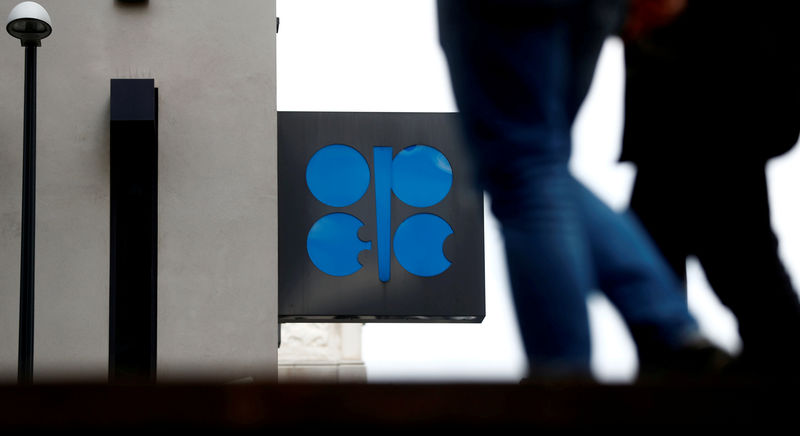 © Reuters. FILE PHOTO: People walk past the OPEC logo in front of its headquarters in Vienna
© Reuters. FILE PHOTO: People walk past the OPEC logo in front of its headquarters in ViennaBy Alex Lawler
LONDON (Reuters) – OPEC said on Tuesday the oil market outlook in the second half of the year is highly uncertain even though the producer group’s figures show a global glut has ended, suggesting exporters will be in no rush to relax output curbs at a meeting next week.
OPEC, Russia and other non-OPEC producers have been cutting output since January 2017 to get rid of excess supply and boost prices. The deal’s main goal was to reduce oil inventories in developed nations to that of the five-year average.
In a report on Tuesday, OPEC said inventories in those nations in April fell to 26 million barrels below the five-year average. That’s down from 340 million barrels above the average in January 2017.
With oil prices () hitting $80 a barrel this year, the highest since 2014, Saudi Arabia and Russia are discussing raising OPEC and non-OPEC oil production. The producers meet on June 22-23 in Vienna to set policy.
Still, OPEC in the report was cautious on the outlook for the rest of 2018, citing a faster-than-expected rise in non-OPEC oil production and the chances of global demand weakening.
“Recently, futures have lost some momentum amid uncertainty as traders prepare for potentially more supply returning to the market,” OPEC said.
“While oil demand in the U.S., China and India shows some upside potential, downside risks might limit this potential going forward.”
The report said OPEC members were still cutting more than needed under the supply deal, even though output in May rose and top exporter Saudi Arabia is boosting supply.
OPEC output climbed by 35,000 barrels per day to 31.87 million bpd, OPEC said. Saudi Arabia reported to OPEC its own output rose back above 10 million bpd.
Fusion Media or anyone involved with Fusion Media will not accept any liability for loss or damage as a result of reliance on the information including data, quotes, charts and buy/sell signals contained within this website. Please be fully informed regarding the risks and costs associated with trading the financial markets, it is one of the riskiest investment forms possible.
Source: Investing.com




























